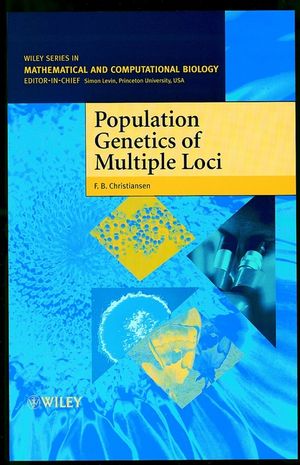Population Genetics of Multiple LociISBN: 978-0-471-97979-1
Hardcover
384 pages
January 2000
 This is a Print-on-Demand title. It will be printed specifically to fill your order. Please allow an additional 10-15 days delivery time. The book is not returnable.
|
||||||
Population Genetics of Multiple Loci F. B. Christiansen University of Aarhus, Denmark "This is a very beautiful and powerful study of an area that Christiansen has dominated for many years." - Marcus Feldman, Stanford University, USA Population genetics thrives on the constant interaction between theoretical and empirical knowledge. In the first instance, population genetics was developed using one-locus, two-allele models for genetic variation. The simplicity of these models opened up theoretical developments in population and evolutionary genetics to biologists without specialist training in mathematics. Population genetics of multi-allelic loci is more complex and requires more mathematical insight, and its study is predominantly undertaken by mathematical biologists. Traditional formulations of multi-locus theory do not simplify by assuming two alleles per locus. In this elegant presentation the author provides a formulation of multi-locus population genetics that retains the simplicity of two-allele models.
* Provides an accessible and natural extension of classical population genetics to multiple loci
* Exposes the population genetic aspects of sexual reproduction
* Describes the complexity of evolutionary interactions among genes
* Provides the background for insight into the functioning of genetic algorithms applied in computer science
* Written by a world leader in the field
The book is divided into two main sections. Part I - Recombination and Segregation - includes coverage of random mating, inbreeding, migration and mixing. Part II - Selection - covers numerous phenomena involving natural selection including viability, fertility, mutation and migration. The author has successfully presented the theory in a way that is intelligible to anyone with a reasonably good background in basic mathematics and is devoted to learning multiple loci population genetics. The text is primarily aimed at advanced undergraduate and postgraduate students and researchers interested in genetics and population biology. It is also essential reading for those working or researching in biomathematics and adaptive computing.
* Provides an accessible and natural extension of classical population genetics to multiple loci
* Exposes the population genetic aspects of sexual reproduction
* Describes the complexity of evolutionary interactions among genes
* Provides the background for insight into the functioning of genetic algorithms applied in computer science
* Written by a world leader in the field
The book is divided into two main sections. Part I - Recombination and Segregation - includes coverage of random mating, inbreeding, migration and mixing. Part II - Selection - covers numerous phenomena involving natural selection including viability, fertility, mutation and migration. The author has successfully presented the theory in a way that is intelligible to anyone with a reasonably good background in basic mathematics and is devoted to learning multiple loci population genetics. The text is primarily aimed at advanced undergraduate and postgraduate students and researchers interested in genetics and population biology. It is also essential reading for those working or researching in biomathematics and adaptive computing.



